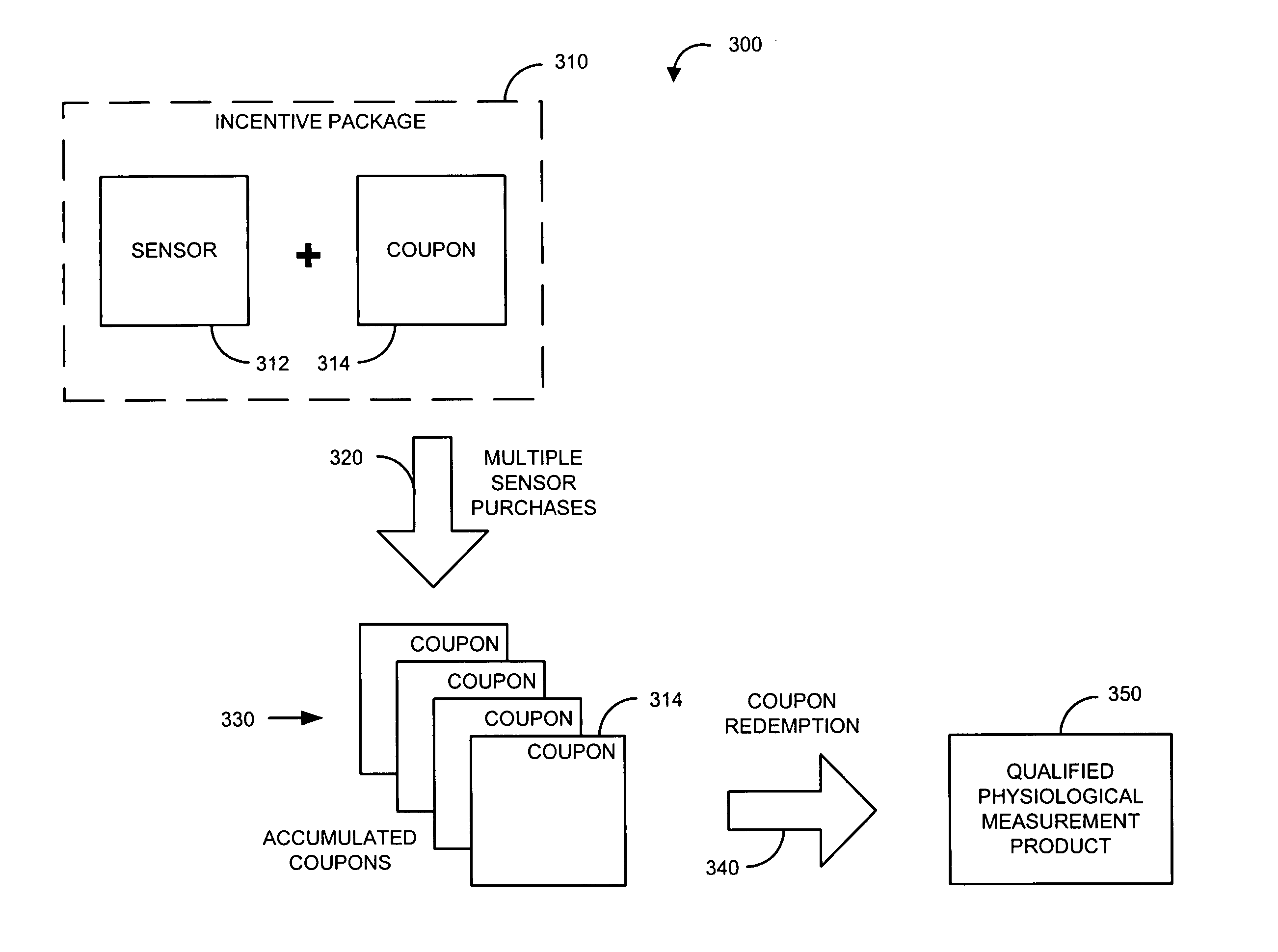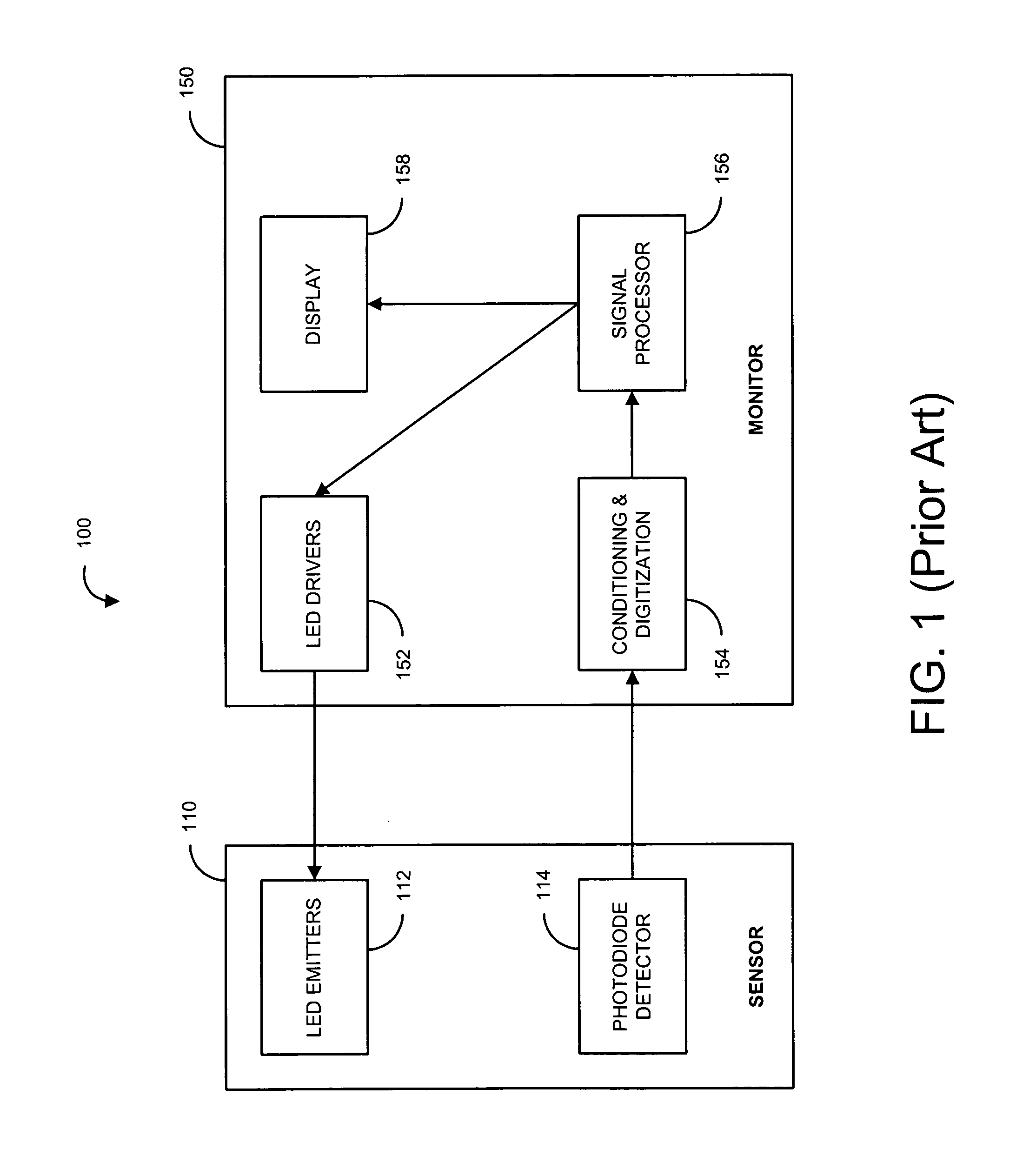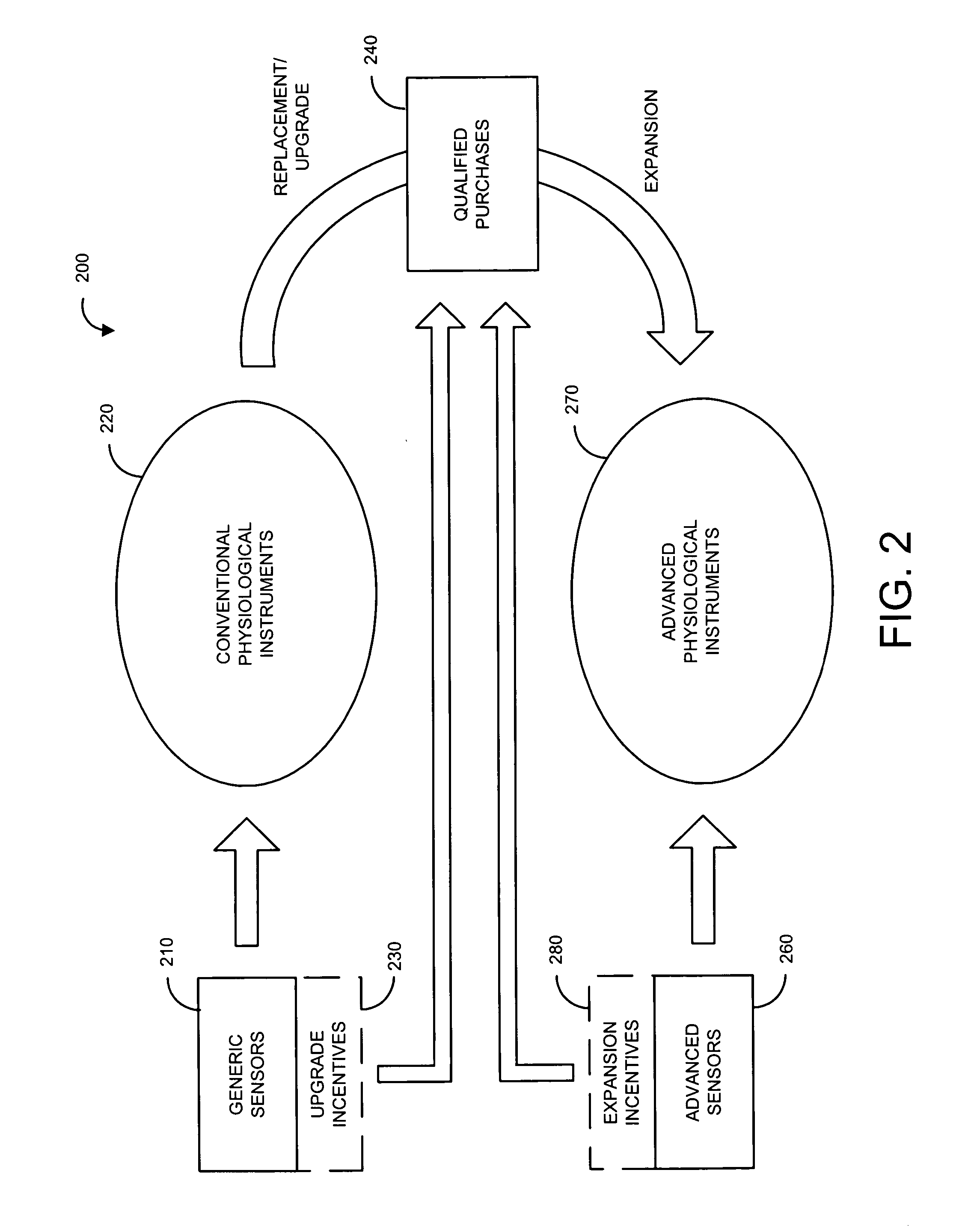Sensor incentive method
- Summary
- Abstract
- Description
- Claims
- Application Information
AI Technical Summary
Benefits of technology
Problems solved by technology
Method used
Image
Examples
Embodiment Construction
[0015]FIGS. 2-5 illustrate a sensor incentive method that advantageously associates a temporary incentive with a sensor purchase so as to motivate, facilitate or otherwise enable healthcare personnel, hospitals and other healthcare institutions, and other end users to replace or upgrade their installed base of conventional physiological instruments in favor of advanced physiological instruments. Such a replacement or upgrade provides superior performance and advanced features for measuring and monitoring physiological parameters. Advantageously, a sensor incentive method is applicable to the purchase of generic and advanced sensors for use with conventional physiological instruments, advanced physiological instruments or a mixture of conventional and advanced physiological instruments.
[0016]FIG. 2 illustrates a sensor incentive method 200 having generic sensors 210 that are supplied to an installed base of conventional physiological instruments 220. Upgrade incentives 230 are assoc...
PUM
 Login to View More
Login to View More Abstract
Description
Claims
Application Information
 Login to View More
Login to View More - R&D
- Intellectual Property
- Life Sciences
- Materials
- Tech Scout
- Unparalleled Data Quality
- Higher Quality Content
- 60% Fewer Hallucinations
Browse by: Latest US Patents, China's latest patents, Technical Efficacy Thesaurus, Application Domain, Technology Topic, Popular Technical Reports.
© 2025 PatSnap. All rights reserved.Legal|Privacy policy|Modern Slavery Act Transparency Statement|Sitemap|About US| Contact US: help@patsnap.com



